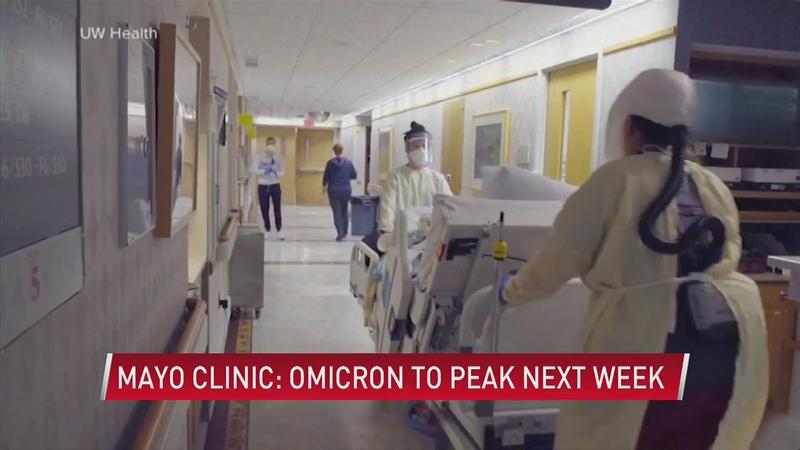Mayo Clinic model predicts Minnesota will reach Omicron peak next week
[anvplayer video=”5084433″ station=”998128″]
(ABC 6 News) – Mayo Clinic explained their latest COVID-19 case models Wednesday, which include predictions that Minnesota’s peak in omicron variant cases will be around January 26. A bit of welcome news for those living in and visiting the Med City. After the peak, cases will be in a steady decline.
"We will likely not have subsequent peaks. We’re likely gonna be heading down for the foreseeable future. It’s very possible that in many areas of the state we’ve already hit a peak," said Mayo Clinic data scientist Curtis Storlie.
Data experts know this from looking at state and local models, as well as wastewater data. Wastewater data can sometimes offer a quicker, more current look into how much COVID-19 is in the community at a time.
"Wastewater data is very valuable. We do some wastewater sampling here in Rochester. It’s not a one to one correlation with what you’re gonna see for cases in the next week, but there is a relationship," Storlie said.
Case reports from the state sometimes lag two weeks behind, but wastewater data shows that some parts of the state, such as the Twin Cities, may already be through their omicron peak. Mayo Clinic patients in Rochester are encouraged by this outlook.

"Hearing that it’s gonna go down — that’s excellent. And the more people wear masks, the more likely that it’s gonna stay down," said Chuck Derry, a Rochester visitor.
Since the omicron surge, the hospital system has seen a increase in COVID patients taking up inpatient beds, but a decrease in those being moved to the ICU.
Data scientists also say there’s no such thing as widespread herd immunity when it comes to COVID-19. Herd immunity may exist locally, but that’s largely due to behavior change such as masking and social distancing. Experts believe it is not due to widespread infection. However, after the state peaks in omicron cases we’re likely to see what experts call a "honeymoon period" of low spread and low case numbers.
"The future beyond that becomes a little bit more uncertain," Storlie said.